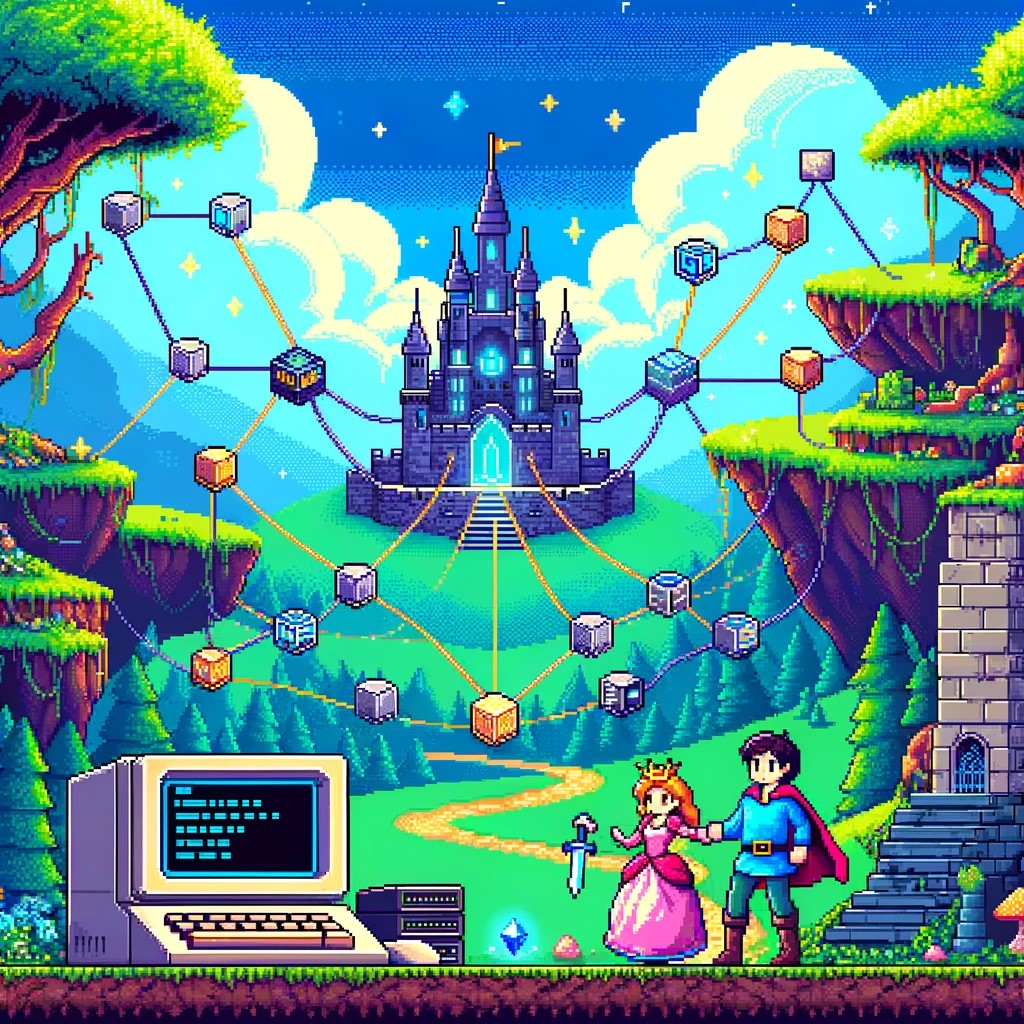
by Joche Ojeda | Jul 4, 2024 | Bitcoin, El Salvador
Background
Before delving into the specifics of Bitcoin’s adoption, it’s crucial to understand the economic landscape of El Salvador. Historically, the country has faced significant economic challenges, including high poverty rates, limited access to financial services, and a heavy reliance on remittances, which account for about 20% of its GDP. Since 2001, El Salvador has used the US dollar as its official currency, which has provided stability but also limited monetary policy options for the government.
Bitcoin Law
On June 9, 2021, El Salvador made headlines worldwide by becoming the first country to adopt Bitcoin as legal tender. The Bitcoin Law, proposed by President Nayib Bukele and swiftly passed by the Legislative Assembly, mandates that Bitcoin must be accepted as a form of payment by all businesses and allows it to be used for all debts, public or private. The law’s key provisions include:
- Mandatory Acceptance: All economic agents must accept Bitcoin as payment when offered by the buyer.
- Tax Contributions: Tax contributions can be paid in Bitcoin.
- Pricing: Prices can be expressed in Bitcoin.
- Exchanges: Exchanges between Bitcoin and the US dollar will be exempt from capital gains tax.
- Government Support: The government will promote the necessary training and mechanisms so that the population can access Bitcoin transactions.
The initial public response was mixed. While some saw it as a groundbreaking move to modernize the economy, others were skeptical about the volatility of Bitcoin and its potential impacts on everyday transactions.
Implementation
The implementation of Bitcoin involved several key steps:
- Chivo Wallet: The government developed the Chivo Wallet, a digital wallet that allows users to store and transact in Bitcoin and US dollars. To incentivize adoption, each user who signed up received $30 worth of Bitcoin.
- Bitcoin ATMs: A network of Bitcoin ATMs was established across the country to facilitate the exchange between Bitcoin and US dollars.
- Government Investments: The Salvadoran government made several Bitcoin purchases, intending to stabilize the market and show confidence in the new system.
Despite initial technical glitches and skepticism, the government continued to promote Bitcoin adoption through educational campaigns and infrastructure development.
Impact
Economic Impact
- Financial Inclusion: Bitcoin has provided an opportunity for financial inclusion, particularly for the unbanked population. With around 70% of Salvadorans lacking access to traditional banking services, Bitcoin offers an alternative means of participating in the economy.
- Remittances: The use of Bitcoin for remittances has the potential to reduce transaction fees and speed up transfer times, benefiting many Salvadoran families who rely on money sent from abroad.
- Investment and Tourism: The Bitcoin initiative has attracted international attention, potentially boosting tourism and foreign investment. The country has seen a surge in crypto-related tourism, with enthusiasts visiting to experience a Bitcoin-driven economy firsthand.
Social Impact
- Education and Awareness: The push for Bitcoin has necessitated widespread educational efforts to ensure that the population understands how to use and benefit from digital currency. This has sparked broader discussions about financial literacy and digital technologies.
- Public Sentiment: Public opinion remains divided. While some embrace the innovation, others fear the volatility of Bitcoin and the implications for price stability and everyday transactions.
Conclusion
El Salvador’s bold move to adopt Bitcoin as legal tender marks a significant milestone in its technological transformation. While the long-term effects are still unfolding, this initiative positions the country at the forefront of digital currency adoption. The next steps involve addressing the challenges of volatility, continuing to educate the population, and monitoring the broader economic impacts. As the world watches, El Salvador’s experiment with Bitcoin will provide valuable lessons for other nations considering similar paths.
Related Articles
El Salvador’s Technological Revolution

by Joche Ojeda | Jun 11, 2024 | Uncategorized
Getting Started with Stratis Blockchain Development: Running Your First Stratis Node
Stratis is a powerful and flexible blockchain development platform designed to enable businesses and developers to build, test, and deploy blockchain applications with ease. If you’re looking to start developing for the Stratis blockchain, the first crucial step is to run a Stratis node. This article will guide you through the process, providing a clear and concise roadmap to get your development journey underway.
Introduction to Stratis Blockchain
Stratis offers a blockchain-as-a-service (BaaS) platform, which simplifies the development, deployment, and maintenance of blockchain solutions. Built on a foundation of the C# programming language and the .NET framework, Stratis provides an accessible environment for developers familiar with these technologies. Key features of Stratis include smart contracts, sidechains, and full node capabilities, all designed to streamline blockchain development and integration.
Why Run a Stratis Node?
Running a Stratis node is essential for several reasons:
- Network Participation: Nodes form the backbone of the blockchain network, validating and relaying transactions.
- Development and Testing: A local node provides a controlled environment for testing and debugging blockchain applications.
- Decentralization: By running a node, you contribute to the decentralization and security of the Stratis network.
Prerequisites
Before setting up a Stratis node, ensure you have the following:
- A computer with a modern operating system (Windows, macOS, or Linux).
- .NET Core SDK installed.
- Sufficient disk space (at least 10 GB) for the blockchain data.
- A stable internet connection.
Step-by-Step Guide to Running a Stratis Node
1. Install .NET Core SDK
First, install the .NET Core SDK, which is necessary to run the Stratis Full Node. You can download it from the official .NET Core website. Follow the installation instructions for your specific operating system. I recommend having all DotNetCore SDKs because the source code for most of the Stratis solutions target really an old framework version like.NET Core 2.1 so it’s better to have multiple choices of framework in case you need to re-target for compatibility
.NET Core Versions
- .NET Core 3.1 (LTS)
- .NET Core 3.0
- .NET Core 2.2
- .NET Core 2.1 (LTS)
- .NET Core 2.0
- .NET Core 1.1
- .NET Core 1.0
Installation Links
Download .NET Core SDKs
2. Clone the Stratis Full Node Repository
Next, clone the Stratis Full Node repository from GitHub. Open a terminal or command prompt and run the following command:
git clone https://github.com/stratisproject/StratisFullNode.git
This command will download the latest version of the Stratis Full Node source code to your local machine.
3. Build the Stratis Full Node
Navigate to the directory where you cloned the repository:
cd StratisFullNode
Now, build the Stratis Full Node using the .NET Core SDK:
dotnet build
This command compiles the source code and prepares it for execution.
4. Run the Stratis Full Node
Once the build process is complete, you can start the Stratis Full Node. Use the following command to run the node:
cd Stratis.StraxD
dotnet run -testnet
This will initiate the Stratis node, which will start synchronizing with the Stratis blockchain network.
5. Verify Node Synchronization
After starting the node, you need to ensure it is synchronizing correctly with the network. You can check the node’s status by visiting the Stratis Full Node’s API endpoint in your web browser:
http://localhost:37221/api
here is more information about the possible ports for the API depending on which network you want to use (test or main) and which command did you use to start up the API
Swagger
To run the API in a specific port you can use the following code
StraxTest (dotnet run -testnet -apiport=38221)
http://localhost:38221/Swagger/index.html
StraxTest
http://localhost:27103/Swagger
StraxMain
http://localhost:17103/Swagger
You should see a JSON response indicating the node’s current status, including its synchronization progress.
Conclusion
Congratulations! You have successfully set up and run your first Stratis node. This node forms the foundation for your development activities on the Stratis blockchain. With your node up and running, you can now explore the various features and capabilities of the Stratis platform, including deploying smart contracts, interacting with sidechains, and building blockchain applications.
As you continue your journey, remember that the Stratis community and its comprehensive documentation are valuable resources. Engage with other developers, seek guidance, and contribute to the growing ecosystem of Stratis-based solutions. Happy coding!
Previous articles
Discovering the Simplicity of C# in Blockchain Development with Stratis | Joche Ojeda

by Joche Ojeda | Jun 10, 2024 | Blockchain, C#, Smart contracts, Stratis
Introduction
Blockchain technology has revolutionized various industries by providing a decentralized and secure way to manage data and transactions. At the heart of this innovation are smart contracts—self-executing contracts with the terms directly written into code. My journey into blockchain development began with the excitement of these possibilities, but it also came with challenges, particularly with the Solidity programming language. However, everything changed when I discovered the Stratis platform, which supports smart contracts using C#, making development much more accessible for me. In this article, I’ll share my experiences, challenges, and the eventual breakthrough that came with Stratis.
Challenges with Solidity
Solidity is the most popular language for writing smart contracts on Ethereum, but it has a steep learning curve. My background in programming didn’t include a lot of JavaScript-like languages, so adapting to Solidity’s syntax and concepts was daunting. The process of writing, testing, and deploying smart contracts often felt cumbersome. Debugging was a particular pain point, with cryptic error messages and a lack of mature tooling compared to more established programming environments.
The complexity and frustration of dealing with these issues made me seek an alternative that could leverage my existing programming skills. I wanted a platform that was easier to work with and more aligned with languages I was already comfortable with. This search led me to discover Stratis.
Introduction to Stratis
Stratis is a blockchain development platform designed to meet the needs of enterprises and developers by offering a simpler and more efficient way to build blockchain solutions. What caught my attention was its support for C#—a language I was already proficient in. Stratis allows developers to create smart contracts using C#, integrating seamlessly with the .NET ecosystem.
This discovery was a game-changer for me. The prospect of using a familiar language in a robust development environment like Visual Studio, combined with the powerful features of Stratis, promised a much smoother and more productive development experience.
Why Stratis Stood Out
The primary benefit of using C# over Solidity is the familiarity and maturity of the development tools. With C#, I could leverage the rich ecosystem of libraries, tools, and frameworks available in the .NET environment. This not only sped up the development process but also reduced the time spent on debugging and testing.
Stratis offers a comprehensive suite of tools designed to simplify blockchain development. The Stratis Full Node, for instance, provides a fully functional blockchain node that can be easily integrated into existing applications. Additionally, Stratis offers a smart contract template for Visual Studio, making it straightforward to start building and deploying smart contracts.
Another significant advantage is the support and community around Stratis. The documentation is thorough, and the community is active, providing a wealth of resources and assistance for developers at all levels.
Conclusion
Transitioning from Solidity to Stratis was a pivotal moment in my blockchain development journey. The challenges I faced with Solidity were mitigated by the ease and familiarity of C#. Stratis provided a robust and efficient platform that significantly improved my development workflow.
In the next article, I will dive into the practical steps of setting up the Stratis development environment. We’ll cover everything you need to get started, from installing the necessary tools to configuring your first Stratis Full Node. Stay tuned for a detailed guide that will set the foundation for your journey into C# smart contract development.

by Joche Ojeda | Apr 21, 2024 | Blockchain
Understanding Non-Fungible Tokens (NFTs)
What are NFTs?
Non-Fungible Tokens (NFTs) are a unique type of digital asset. Each NFT is distinct and cannot be replicated, which differentiates them from cryptocurrencies like Bitcoin or Ethereum, where each unit is identical.
What Can NFTs Represent?
NFTs can represent a wide array of digital and real-world items, including digital artwork, music, in-game items, videos, and even real-world assets like property rights.
Smart Contracts and Minting NFTs
The creation of NFTs involves the use of smart contracts, which are self-executing contracts with the terms of the agreement directly written into code. These smart contracts are used during the minting process, which is the term used for creating an NFT.
OpenZeppelin Contracts
OpenZeppelin provides a library of open-source smart contracts that are secure and have been thoroughly tested. These contracts are often used for creating NFTs and include implementations of standards like ERC-721 and ERC-1155. OpenZeppelin contracts are considered the gold standard for smart contract development and are used by many in the industry.
Fungible vs Non-Fungible Tokens
Fungible tokens are interchangeable and identical to each other. For instance, cryptocurrencies like Bitcoin or Ethereum are fungible tokens. If you have 1 Bitcoin, it’s the same as any other 1 Bitcoin.
On the other hand, non-fungible tokens (NFTs) are unique and cannot be interchanged with any other token. Each NFT has a distinct value based on its attributes. For example, consider a ticket to a concert. Each ticket (an NFT in this case) is unique based on its specific information such as the seat number, section, and row.
Minting an NFT
Minting an NFT is the process of creating a unique digital asset on a blockchain. This process involves transforming digital data into a unique digital asset, or NFT, that is recorded on the blockchain.
In conclusion, NFTs represent a new frontier in the digital world, offering a unique way to own and trade digital and real-world assets. Through the use of blockchain technology, smart contracts, and standards provided by libraries like OpenZeppelin, NFTs are changing the way we think about ownership and trade in the digital age.

by Joche Ojeda | Apr 19, 2024 | Blockchain
Blockchain in Healthcare: A Revolution in Medical Records Management
Introduction
In the digital age, the healthcare industry is constantly evolving. One of the most promising advancements is the application of blockchain technology, specifically Ethereum-like blockchains, in managing medical records. This technology offers a secure, decentralized, and transparent platform that can address many of the pressing issues in healthcare.
The Problem with Current Systems
The current healthcare systems are often fragmented and siloed, leading to incomplete records at the point of care and difficult access to patients’ own health information. This lack of interoperability between clinical data structures at both individual and community levels often results in patients receiving unnecessary medical services, such as repeated blood tests or physical examinations. Moreover, healthcare providers often do not have complete access to a patient’s medical records, which can lead to inadequate diagnosis or treatment.
The Blockchain Solution
Blockchain technology, particularly Ethereum-like blockchains, can revolutionize the healthcare industry by providing a secure and organized exchange of data within the medical community through shared repositories. These mechanisms aim to protect patient records and anonymity, making doctors more aware of their patients’ medical histories.
Blockchain technology alleviates the reliance on a centralized authority to certify information integrity and ownership, as well as mediate transactions and exchange of digital assets. It possesses key properties, such as immutability, decentralization, and transparency.
Use Cases of Blockchain in Healthcare
Patient Record Management
One of the most promising use cases of blockchain in healthcare is patient record management. Blockchain can enable access to longitudinal, complete, and tamper-aware medical records that are stored in fragmented systems in a secure and pseudo-anonymous fashion. This can grant patients complete ownership of their health records so that they can give or revoke access to their data at any time.
Drug Supply Chain Tracking
Blockchain can also be used to tackle the illicit shipment or unlawful processing of controlled drugs. It offers an opportunity to register, provide a chronology, and show the identity details of drugs in an immutable database. This secure monitoring of the supply chain and the traceability of medical products is important to avoid the sale of illegal or illicit drugs.
Conclusion
The application of Ethereum-like blockchain in healthcare, particularly in managing medical records, presents a promising solution to the current challenges in the healthcare industry. By providing a secure, decentralized, and transparent platform, blockchain technology can revolutionize the way we manage and access medical records, ultimately leading to improved patient care and health outcomes.




